By Brandes Elitch
Art by Martin Squires
Assumptions are generally pretty tenuous as a rule, but it is perhaps a safe assumption that if you’re reading VeloceToday, you are interested in (and probably knowledgeable about) French and Italian cars. The total number of French and Italian vehicles that were sold in the U.S. for the last fifty years as percentage of total vehicle sales is miniscule, so this is a pretty arcane subject, but not as arcane as motorcycle collecting versus car collecting.
For a number of years, I have been covering the Quail Lodge Legend of the Motorcycle annual show, which has to be the premier motorcycle concours in the world, organized by Gordon McCall. There is a good chance that walking this show will make you a motorcycle collector, if you are not already, which is what happened to me. Car collecting and motorcycle collecting are really two different worlds. A Venn diagram of the overlap might show that perhaps 10% of car collectors also collect motorcycles, a totally unsubstantiated guess. The reason is that riding a motorcycle requires a totally different skillset than driving a car; among other things, having an impeccable sense of balance, and a feel for when weight is shifting from side to side and front to back. One small mistake and you are in the weeds, or worse, which would require what is euphemistically referred to as “sheet time.”
Since many of our readers live in the past, like me, I thought it might be useful to put today’s featured artist in profile. He is British. Doubtless you know that Britain dominated the motorcycle industry up through the 1960’s. People ask “Whatever happened to the British motorcycle industry,” the title of a book by Bert Hopwood in 1981. Here’s what happened, as Bert explains:
-Few British motorcycle company executives in the 1950’s came from the industry. They came from the financial industry, not engineering, design, or manufacturing.
-Money was diverted from product to marketing, causing quality to fail.
-British trade unions opposed modern production techniques, so production was slow and outdated. Management tried to negotiate with the trade unions – bad idea.
-British firms made bikes based on pre-WWII designs that no longer appealed to buyers.
-Passion for British bikes waned
-Finally, somewhat tragically, British bikes stagnated, while Japanese products became cheaper, more reliable, and had more innovative engineering development. They started, stopped, and did not break down or leak oil. What a concept!
In the 1950’s, British motorcycles were so successful in the U.S. that our American firms sought to have them banned or at least heavily taxed. Now of course, the bikes that have survived are very desirable and collectible.
And our featured artist today is someone who is able to capture the magic of the bikes of this period. I have heard people say that the Golden Age of Motorcycling is the sixties and seventies, which may be true, but in fact there are many desirable bikes built before and after that, and not all of them are British either.
Today we are privileged to spend some time with Martin Squires, one of the premier motorcycle artists in the world today. I believe you will find his work quite excellent and you can contact him directly for further information. Here is our brief dialog:
How do you choose a new subject?
A lot of my practice is done out on the field, attending events or visiting collections. At events I make sure I’ve looked round the whole event before making decisions on what I want to draw. If it’s my own choice I will mostly choose to draw specials, especially race, sprint machines and other oddities; these are machines I haven’t seen before and I will be intrigued by either their design or purpose. I’d say up to 90% of my knowledge of motorcycles has come from my time sketching them – when I first started earnestly sketching motorcycles my sketches would take about 15-20 minutes – as time has gone on and my knowledge has increased my work has become more detailed and fanatical. Sketches can now take 2 – 3 hours for the more complicated machines.
Do you have a favorite marque and do you have a favorite period (e.g. the fifties, sixties, or seventies) and why?
About 10 odd years ago I came across photographs of cyclists paced by huge motorcycles and early board track racing photographs. This led me to start some fairly intensive research into motorcycle racing pre-Brooklands (1907). This for me is a fascinating period as people were just getting to grips with what a motorcycle was and it wasn’t long before people wanted to see how fast they could go. Combining this research with my other fascination, comic books, I have written a series of articles under the Banked Track Heroes name. These articles cover a period from the late 1800s through to the opening of Brooklands and ending with the closing of the track. Even though this is a brief period of time a huge amount happened. The project has been a slow burner, especially as it is all of my own volition and created in the rare spare moments I have between paid illustration jobs. Some of these articles have been published in The Classic Motorcycle and will be compiled into self published magazines in the near future.
Back to the question… my favourite marque? Well that’s a very difficult one to pin down! Zenith have always fascinated me, especially the racers that lapped the banked track at Brooklands, but I’d say the racing motorcycles of Harry Martin, a racer from the period covered by Banked Track Heroes, are probably my most favourite machines of all time. One day I would love to recreate his single cylinder JAP overhead valve racer.
Other than that, my father-in-law has indoctrinated me into the world of Morgan Three Wheelers, Matchless and AJS motorcycles as well as various cycle motors. I am fond of the BSA Bantam, it’s the families most ridden motorcycle, and I’m also working on (well have been for 10 years) a trials Bantam. Oh, and we have a 1947 Dodge pickup too, I will stop there.
Please tell us about the books you have put together now and how Americans can order them.
Over time I have published small self printed collections of my work. Volumes 7 & 8 are available through my website. I write and illustrate a monthly article for The Classic Motorcycle called “Sketchbook Travels” which includes my latest findings. I have plans to collate these articles into a book over the coming year as it has been a while since I have released a compilation and I’m now nearly 70 articles on from when I started writing for The Classic Motorcycle back in 2015.
I’m currently working on a book titled “Italian STOCK” with writer Greg Pullen. We have only just started this project but it is currently set to cover selected Italian machines and their creators telling the story of Italian motorcycles from the end of WW2 through to the 1980s. This has become a fascinating period for me but isn’t one I would have chosen a few years ago. Over the last few years, I have been either commissioned to draw or been introduced to these incredibly well-designed machines by other people. One of my major commissions was for Union Garage, Brooklyn back in 2017. I was asked to illustrate the catalogue for their Italian Sporting Bikes of the ’70s show, this bought together a perfect collection of Italian machines all in one place for a weekend. I was lucky enough to attend and had a great time sketching motorcycles and chatting to all sorts of people form around the world.
Martin’s website is: www.Sketchbooktravels.com
He can be reached at this email address: mrtnsquires@googlemail.com
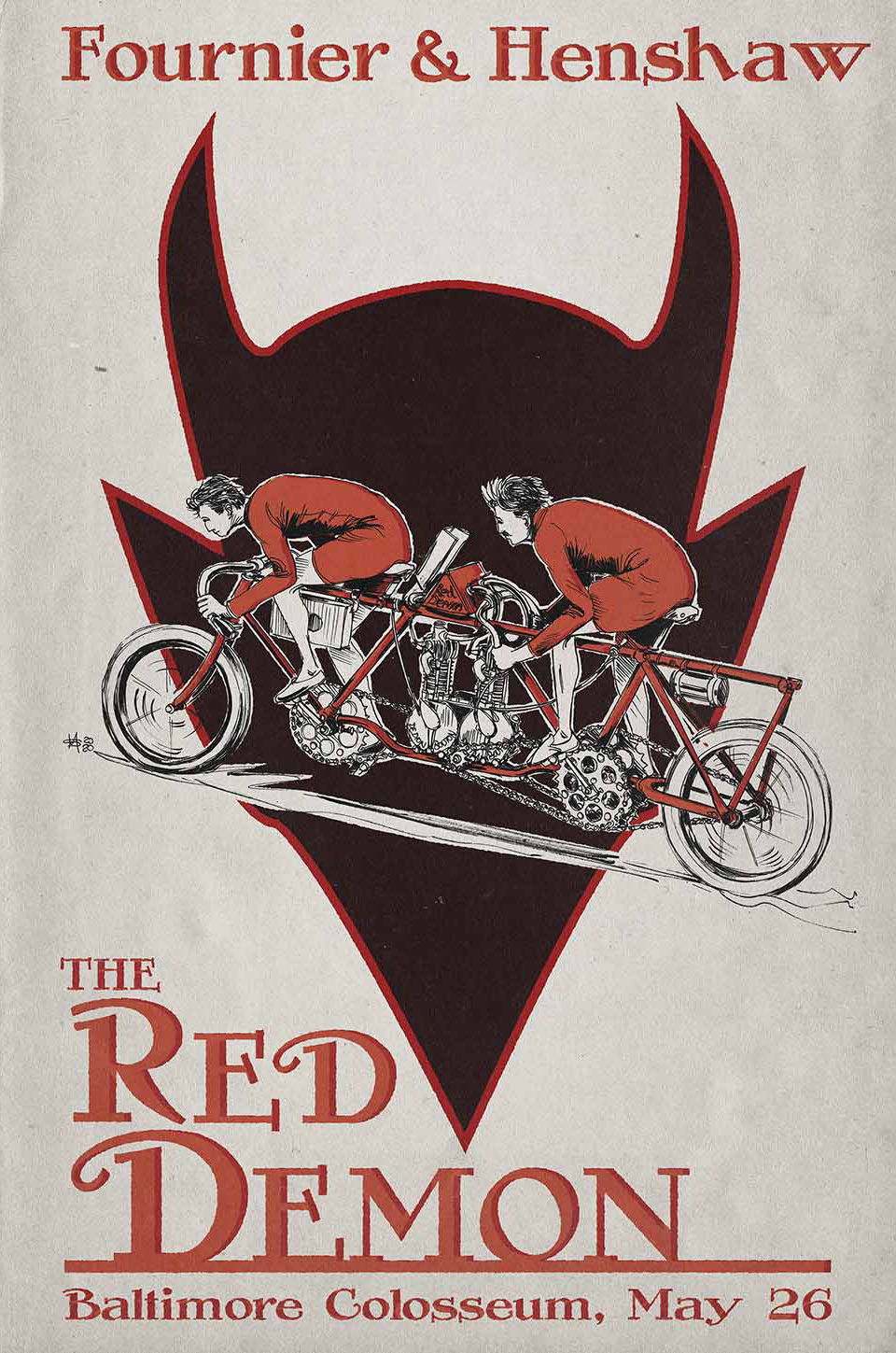
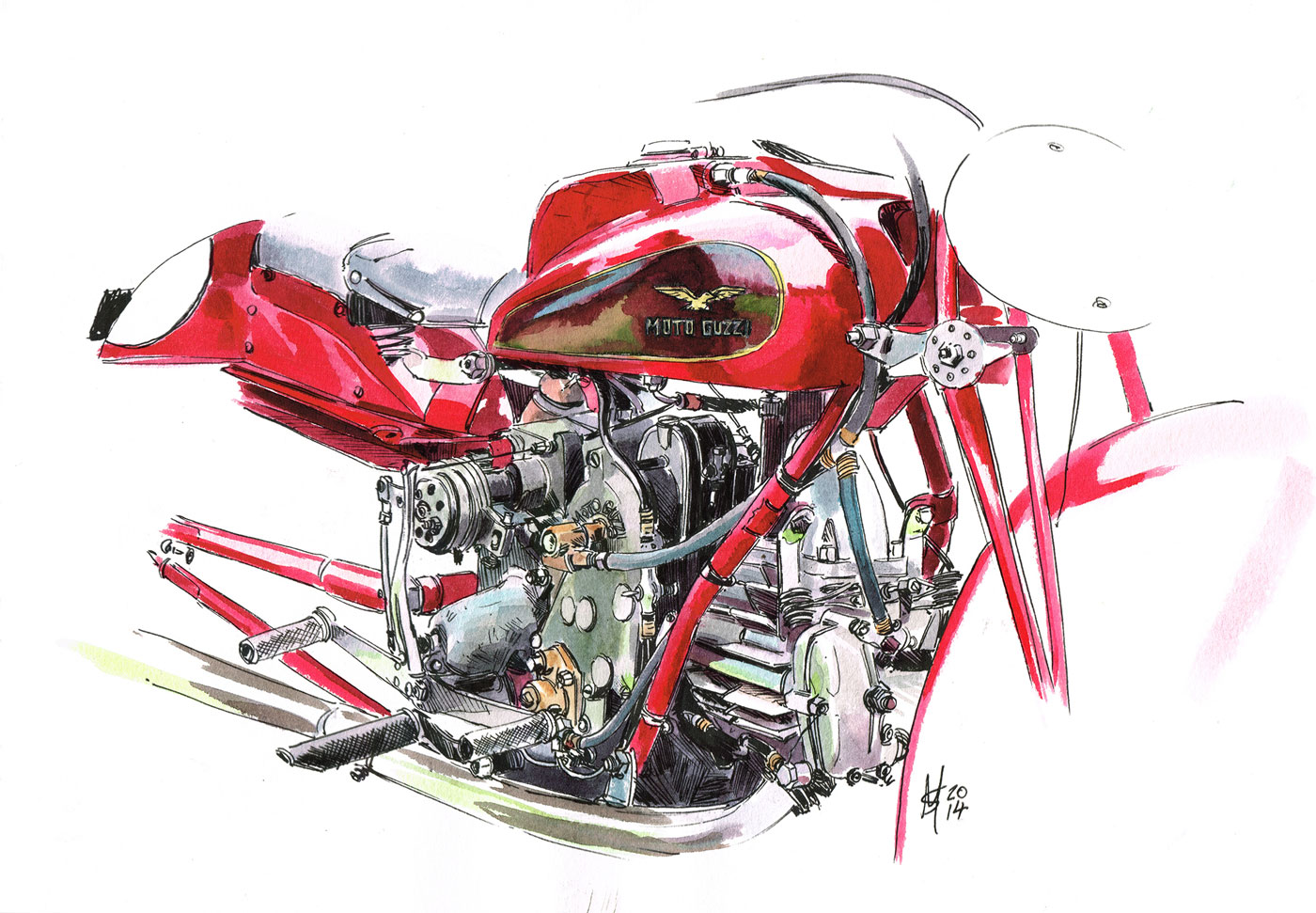
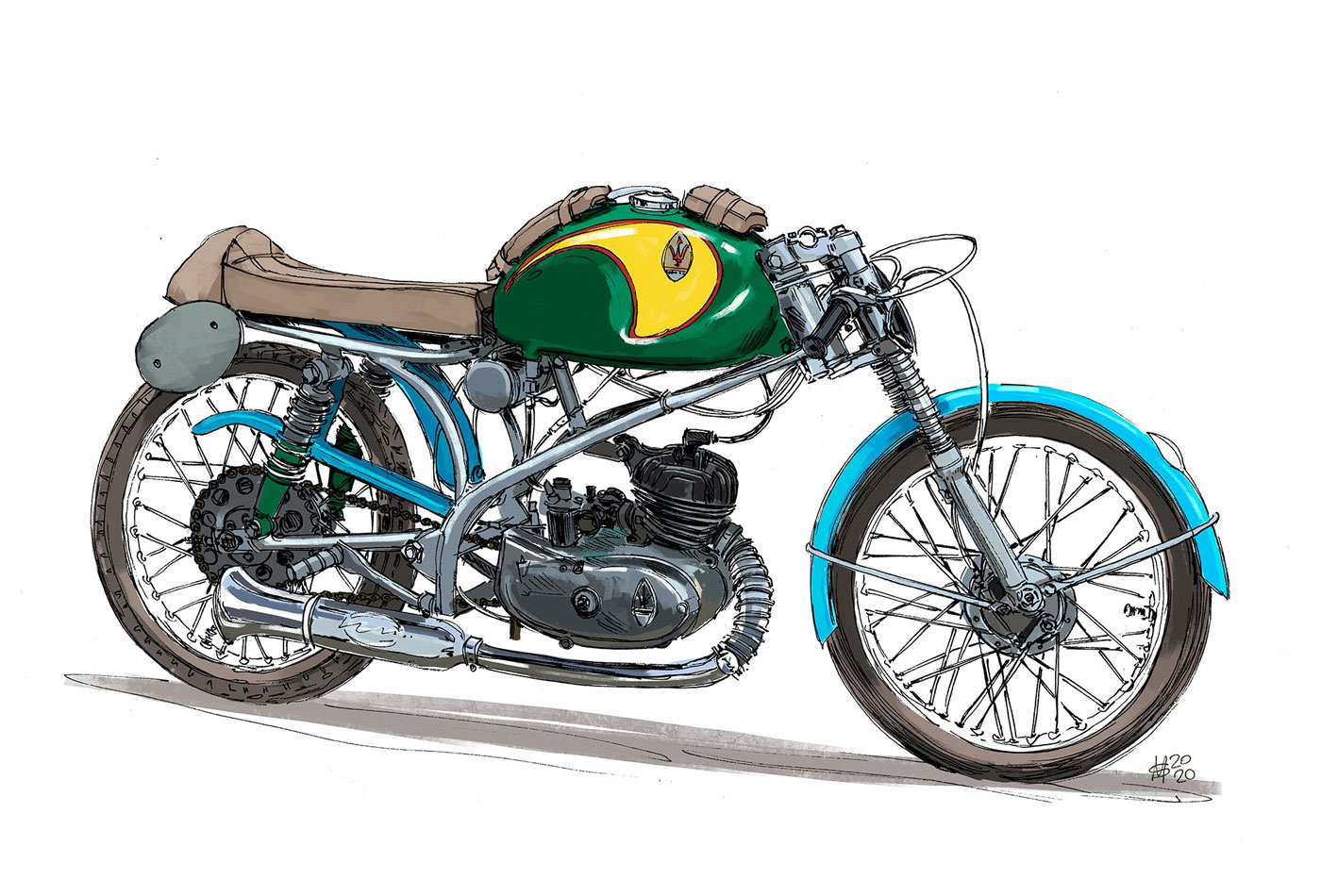
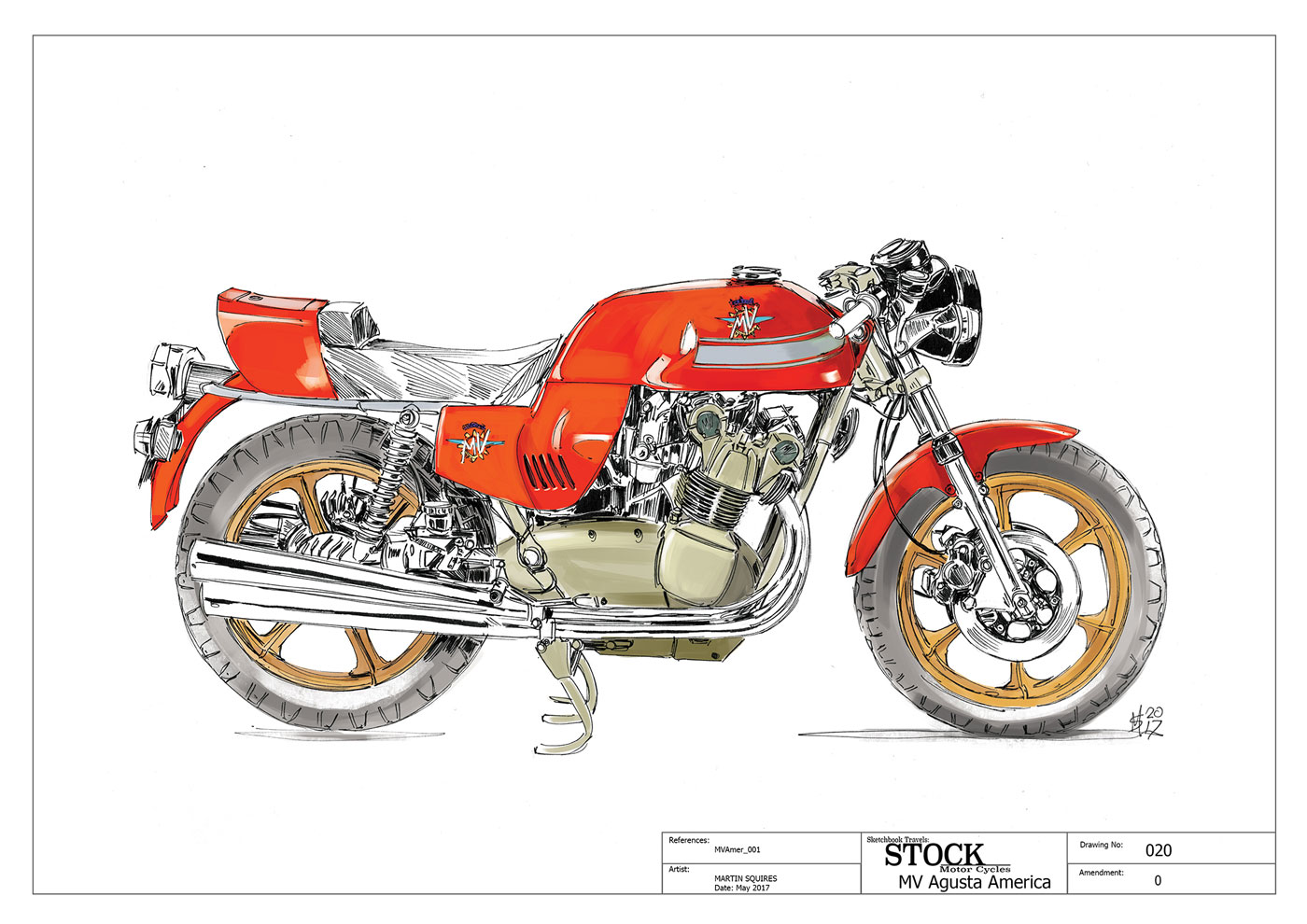
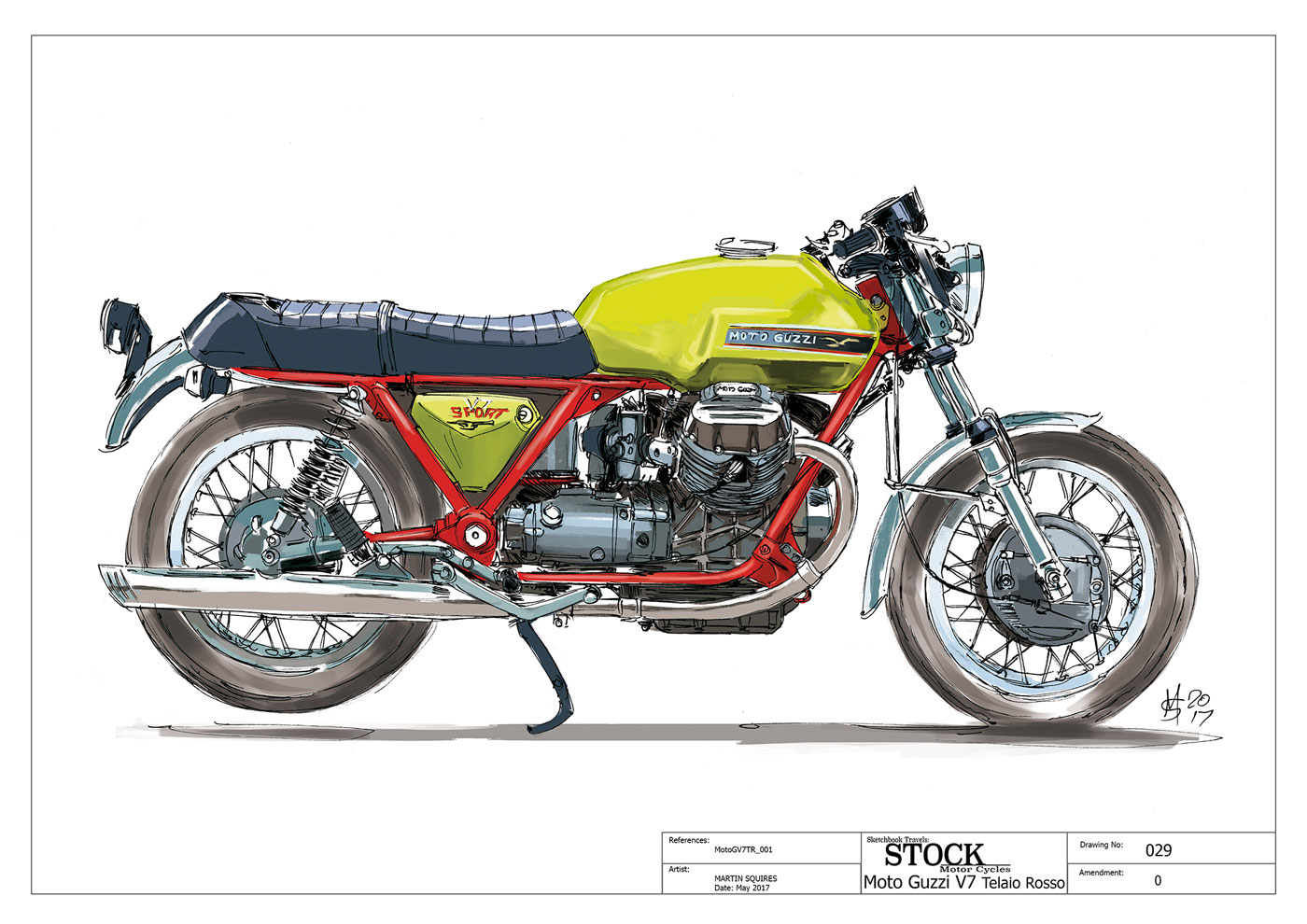


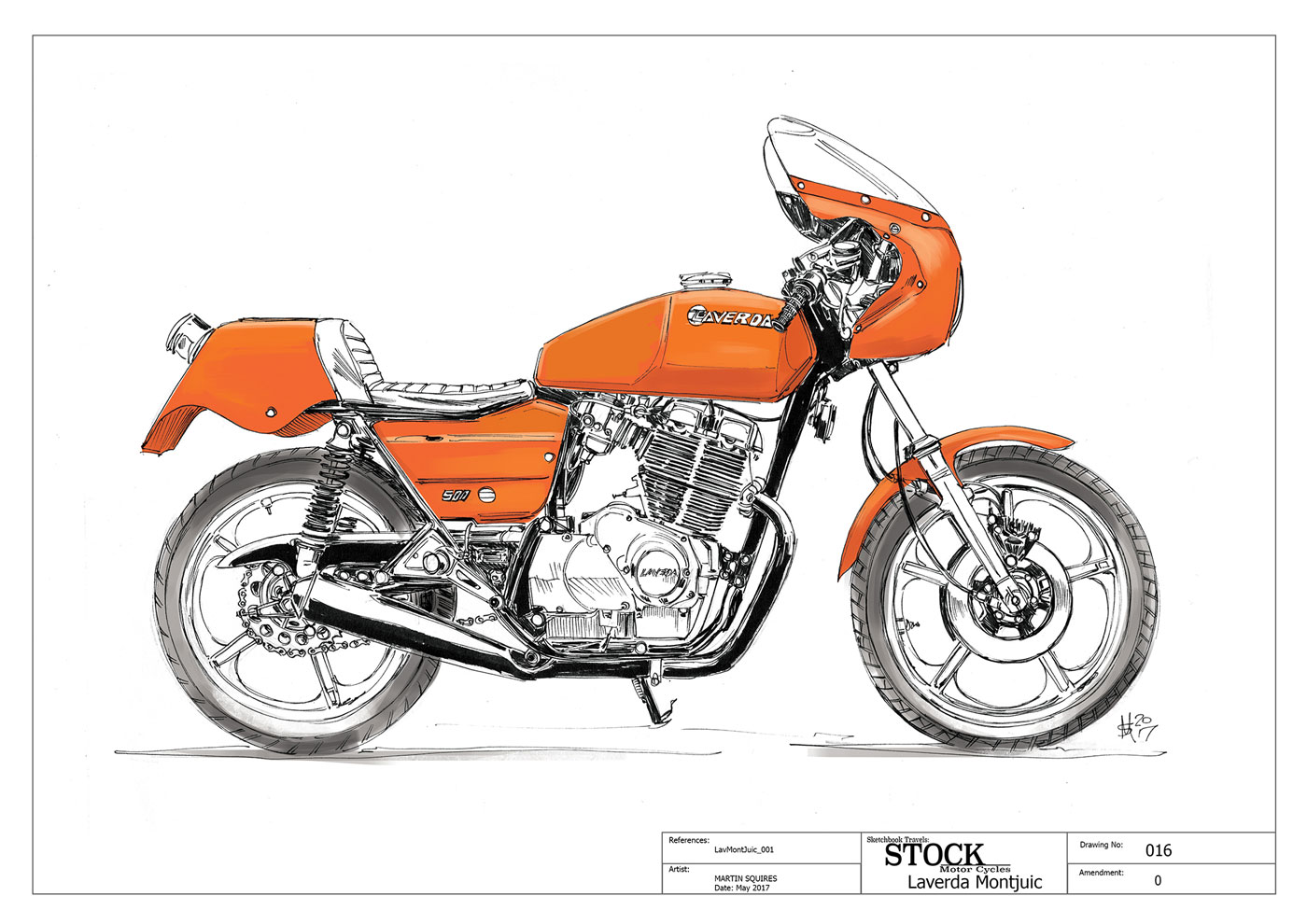
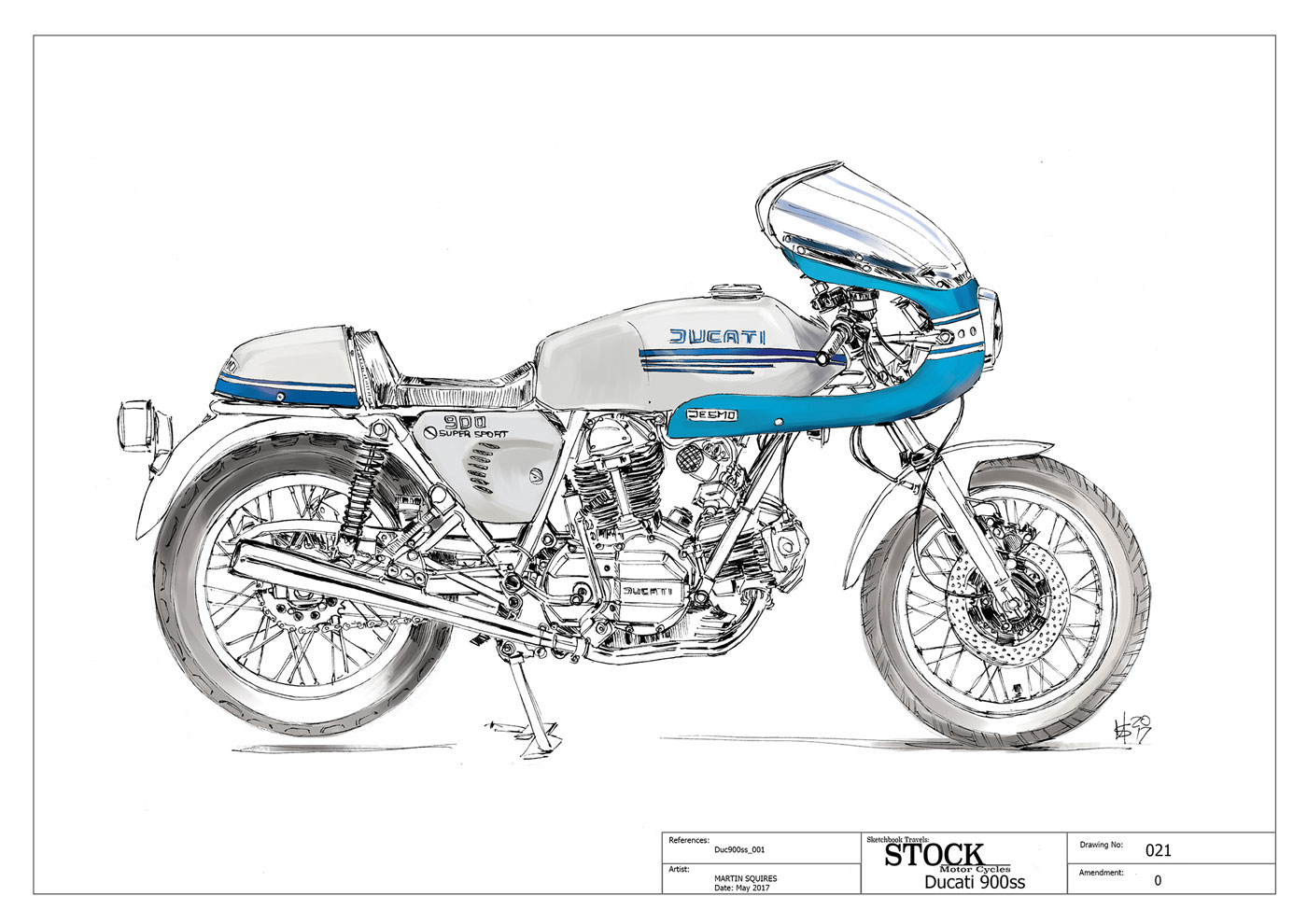
Wonderful renderings of gorgeous machines
I met Martin Squires at the Union Garage in Brooklyn in 2017. Nice chap! He has a remarkable feel for 1970s Italian motorcycles and is well able to capture the marked and subtle differences between a Ducati 750 SS and a later 900 SS, and between the various Moto Guzzi 750s and Laverda 750s of the period. And his prints are extremely good value. I love his pen, ink and wash. Thanks for showing off his work.
Another January! I still want a motorcycle to ride away on — desmodromic Ducati preferred — but I’d just fall off